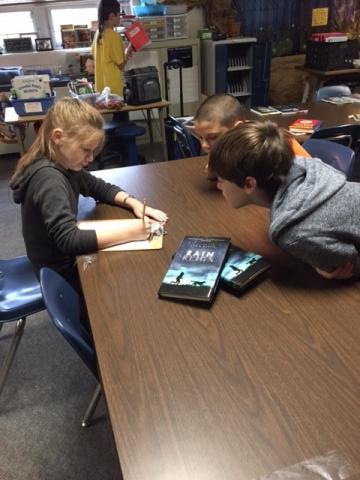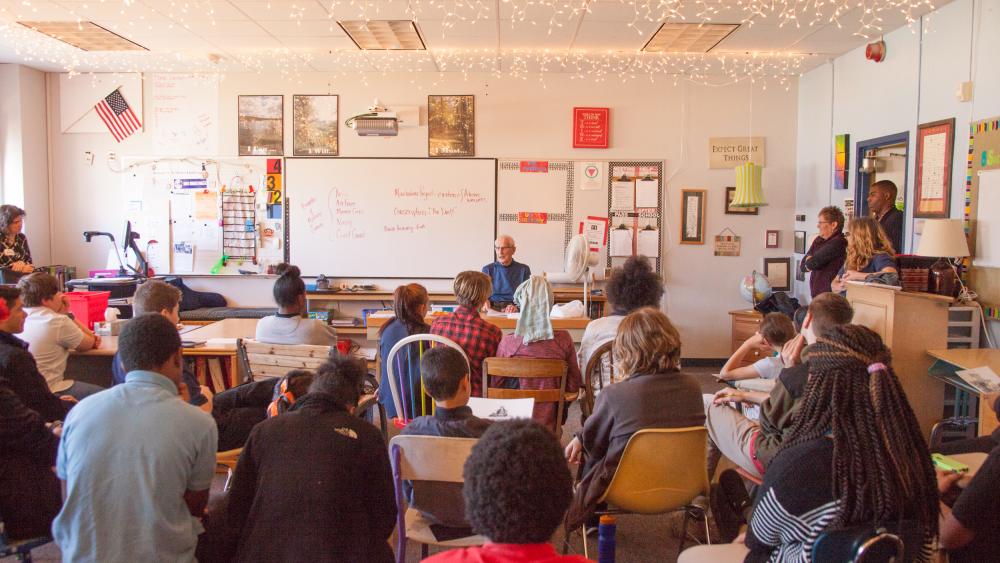Guest blog post by Beth Smith, Consultant, generationOn Indiana
Students who receive special education services often thrive when given alternative, authentic methods to practice and demonstrate mastery of skills. Service-learning guided by philanthropy education is an effective and empowering method for learning and applying knowledge and action. The real-life applications guide students with disabilities to become contributing citizens who are seen as assets to the community.
Service-learning and philanthropy education provide a rich environment for teaching and strengthening skills important for students with special needs: social/emotional skills, academic skills, functional skills, and transition skills. Students with disabilities may work best with alternative and authentic methods of instruction and assessment.
While learning about and addressing needs in the community, students learn and use practical skills like reading, writing, problem-solving, and communicating with strangers. They develop community relationships and gain self-efficacy, a feeling that they are capable. Service-learning and philanthropy instruction provide authentic applications of Individual Education Plan (IEP) goals, and connect purposefully to the necessary curriculum standards.
With purpose-driven assignments, service-learning and philanthropy also teach higher level thinking skills. Throughout the process, students take time to reflect and become aware of their learning and its impact. Practicing the skills of civic responsibility develops confidence and leadership, and helps the student with a disability feel like an important and contributing member of society. Giving and action are contagious, and repeated and varied experiences strengthen students’ involvement in community, and the community sees them as assets.
- Service-learning and philanthropy education allows students to generalize acquired skills in a real-world setting – increasing the likelihood that the skill can be performed in a variety of settings.
- Incorporating lessons that connect students to community allows them to use voice and choice in their project ideation and to connect social skills to curriculum.
- Service-learning and philanthropy education also incorporates universal design for learning to meet the varied needs of all students.
 Success in the Classroom and Community
Success in the Classroom and Community
Teacher Ms. Schrougham from Spencer Elementary School incorporated the TeachOne lesson "Doodle Stones" to teach and enrich collaboration, communication skills, social/emotional skills, and empathy and understanding in her classroom. The students read the book, Rain, Reign and participated in a discussion about students’ differences and similarities. As a mainstreamed classroom, the emphasis was on embracing differences and fostering a “family” atmosphere.
Ms. Bassett, a teacher at Summit Middle School incorporated a functional and life skills project into her functional classroom. Students “Bake a Difference” by baking sweets for faculty members in the school. Adapting content from “One Small Act” the students planned the baking menu, shopped for the ingredients while staying within their budget, and created the baked goods all of which required to students to utilize social/emotional, collaboration, and communication skills. Students also wrote personal notes of appreciation for the staff members, developing and encouraging writing skills. Inherent in the process, students gained authentic practice of vital life skills: budgeting; food preparation; grocery shopping; hygiene; and job-related skills.
Students in Ms. Smith’s self-contained classroom at Wabash High School partnered with their local animal shelter for a service-learning project. Using the lesson, “I am a Hero for Animals” the students identified the needs of their local shelter and volunteered for service. They completed the application for employment and utilized standard job skills while volunteering. They also completed an assessment of the shelter’s needs to organize a collection to meet those needs. Communication, math, transition, job, and independent living skills were practiced as a part of the service.
Service-learning and philanthropy education is a natural fit for special education and inclusion classrooms.
Teaching and practicing the skills of giving time, talent, or treasure for the common good is a natural vehicle for authentic assessment and an alternative delivery of content that many special education students need.
About the author:
Beth Smith, an educator for more than 30 years in private, suburban public, inner city public, and rural public schools, has had the opportunity to incorporate service-learning in a variety of settings, disciplines, and curriculum. Service-learning has been an integral part of her teaching career.
Beth has had the opportunity to work in the cooperative inclusionary classroom, in community-based instruction, and in a self-contained special education classroom. She has worked with students with emotional disabilities, students on the autism spectrum, and students with mild disabilities. Beth was IPS Teacher of the Year and a finalist for Indiana Teacher of the Year.
Currently, Beth serves as an educational consultant for generationOn Indiana, facilitated through the Indiana Association of School Principals and the Indiana Middle Level Education Association.
Contact Beth Smith
